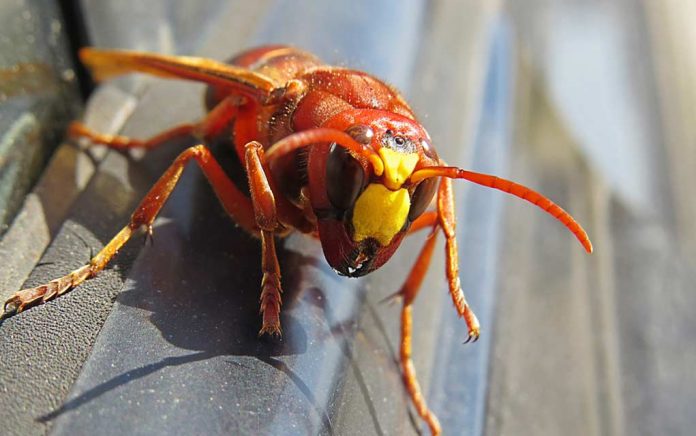
Murder Hornets: Big Hype or Real Risk?
(AscendHealthy.com) – A handful of invaders may have found their way into the United States, and these massive insects could mean serious trouble if they’re allowed to take hold. The New York Times dubbed them “murder hornets” after suspicions of their arrival struck fear in Washington residents. But are they really that big of a threat? We have the details.
What Are Murder Hornets?
According to the Washington State Department of Agriculture (WDSA), the Asian giant hornet is the largest of all hornets, their bodies measuring between 1.5 and 2 inches in length. Its massive head is usually orange or yellow, and it has dark, prominent eyes. It’s easy to get this species confused with other large wasps, so it’s best not to go on any killing sprees if you think you’ve spotted one.
The WDSA has a hornet watch report form you can use to inform officials of potential sightings. Reporting sightings is important because these insects could decimate our honeybee population if they’re allowed to take hold. The “murder hornet” nickname comes from their propensity to tear through honeybee hives, beheading their victims, one after the next, leaving piles of bodies in their wake. They’re social insects, with the queens building large nests in abandoned rodent dens and underneath exposed tree roots.
In their native habitats, honeybees have developed strategies to protect their hives. Scientific American explains that Asian honeybees will often overwhelm the wasps by forming “bee balls” around the intruders and heating them to death with rapid wing movements. The European honeybees here in North America don’t have that defensive response, leaving them vulnerable to attack.
Invading North America
The first report of Asian giant hornets on US soil came in December of 2019 when a Washington resident found a dead specimen on their property. It’s possible, however, given other recent reports from neighboring provinces in Canada, that the Asian giant hornet has already established itself in North America and its population is just now hitting our radar. No one knows for certain how the insects got here, but the running theory is that they were smuggled in for their value as traditional medicine or food item.
How Dangerous Are They to Humans?
Between 30 and 50 people die in Japan each year from Asian giant hornet stings. These hornets will fiercely defend their nests, and they have massive stingers that can pierce normal protective beekeeping gear. Many giant Asian hornet deaths are due to allergic reactions, but some are the rare result of severe toxicity from multiple stings. Complications can include blood clots and vital organ failure, so it’s important never to approach a suspected nest.
Asian giant hornets could be here to stay. If they are, we’ll need to adapt to save our honeybee population — and we’ll all need to get used to one more type of uninvited guest during barbecues and picnics. You probably don’t have to worry too much about them unless you stumble over a nest or have a severe allergy. All the same, you’ll want to leave this insect alone if one does happen to cross your path.
~Here’s to Your Healthy Ascension
Copyright 2022, AscendHealthy.com




















